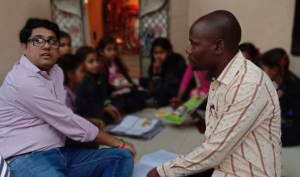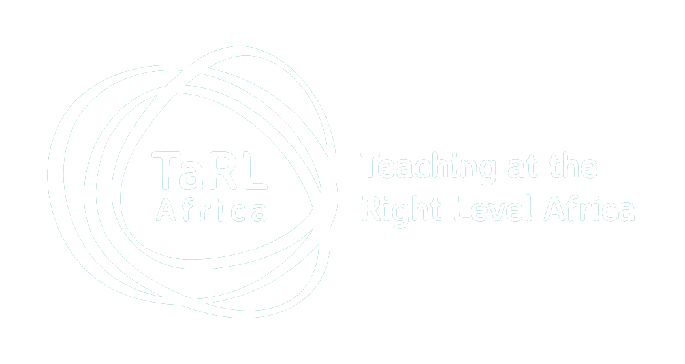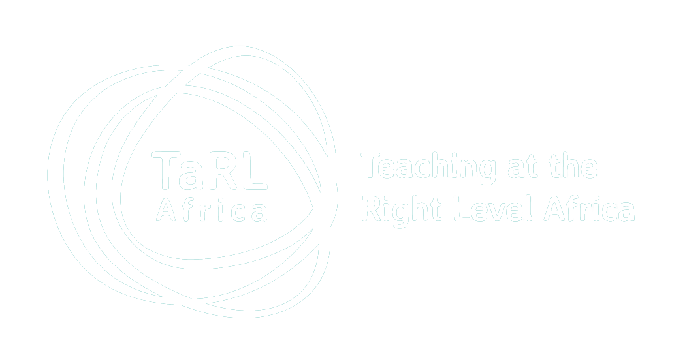
“Once you stop learning, you start dying” – Albert Einstein.
I wanted to keep learning so, in February 2020, I set out on a two week learning journey to India – the home of the Teaching at the Right Level (TaRL) approach developed by Pratham. To make the most out of this learning journey, I had to keep an open mind and be ready to learn by observation, interactions, and in-depth interviews with Pratham staff, government officials, teachers and community members in the states of Maharashtra and Gujarat.
Five years of work on G-United, a TaRL programme in Kenya, gave me the privilege of interacting and working closely with the Pratham team on content development and training. However, I was grappling with some challenges in trying to adapt the approach to my country context. One of the key challenges included high teacher-pupil ratios and its effect on class management. This same feeling may be experienced by organisations across many countries which are testing, adapting and scaling TaRL in Africa.

A warm welcome: the head teacher welcomes TaRL Africa team member Fred Abungu to their school.
In India, the TaRL approach is implemented as a direct model by trained Pratham-employed facilitators and/or by the government through teachers. These two models present unique opportunities and challenges.
I’ve learned that, before you choose what model to adopt, it is important to carefully look at the pros and cons of each. For instance, the government model is cheaper and easier to scale up due to existing infrastructure, but one must be aware of bureaucracies and varying levels of commitment. The direct model, on the other hand, is easier to set up, provides more control over implementation but may be more expensive to scale.
Another striking thing I noticed was how the Government of India has managed to reduce the teacher-learner ratio despite the huge national population. The average teacher-learner ratio observed in Nagpur and Katol was at one teacher to an average of 18 learners1. This makes it easier for the teacher or facilitator to not only provide individual support to learners but also support a heterogeneous group of all levels of learners in one class. Additionally, one keeps the same set of learners for both language and mathematics activities. The result is that you hardly notice the transition from language to mathematics activities.
All government officials and teachers in Nagpur had smartphones. This was a plus in the development and integration of data collection application and data dashboards. Government officials have access to data at different levels. The ability to create filters makes it a very useful tool for data manipulation. Cluster heads visit all assigned schools at least once every week to supervise and provide support. There are also regular meetings at all levels of the government from Division to the block level to review progress and make decisions on areas that need support. These meetings are attended by the Pratham’s state leads.
In Kenya, the teacher-learner ratio is very high (1:50). This makes grouping and targeting of multiple levels of many learners challenging. It also poses different challenges in class management. This is a reality that no one may have answers for, but an opportunity for all of us to explore and learn what works in our context.
While it is exciting to see learners make remarkable improvements at the end of the camps, one question always remained in my mind: how do we sustain the gains from the learning camps? What I observed surprised me: learning goes beyond the school into the community. Pratham mastered this through the integration of learning camps and Hamara Gaon2. The objective of the Hamara Gaon (our village) concept is to ensure that children at all levels acquire foundational skills and that community members are engaged in supporting children’s learning. In this programme, the following categories of learners are targeted:
- Grades 1 & 2 participate in light activities with the help of community volunteers.
- Non-readers in grades 3 -5 are targeted for learning camps. Readers are provided with worksheets.
- Grades 6 to 8 participate in the library programme.

TaRL Africa team members Vikas Varma and Fred Abungu visit a Hamara Gaon programme.
Hamara Gaon presents opportunities to sustain the learning gains in schools, to involve parents in supporting the children’s learning, and for project-based learning to take place. Learning does not only start and end at school but is a continuous process, and the community is critical in supporting this.
On the G-United programme, the community engagement component included sharing of progress results: at the beginning of camps, volunteers would meet parents or guardians of targeted learners at school to share baseline results and to ask them to ensure learners regularly attend remedial sessions during the planned time slots. On specific occasions, volunteers would follow up with parents or guardians at home to discuss child progress.
In Africa, the TaRL approach presents many opportunities for learning and integration. As one thinks about planning, programme design, implementation, monitoring and mentoring, one is likely to face a myriad of challenges. Every challenge encountered is an opportunity to learn and improve. It is therefore important to think about how to document lessons and use them to improve delivery and overall programme outcomes.
[1] According to the Ministry of Human Resource Development, in 2018-19, the average pupil to teacher ratio in only government primary schools in rural India was 23. The Maharashtra PTR was 18 and Uttar Pradesh, which is the most populous state in the country, had a PTR of 29 students. Through the Sarva Shiksha Abhiyan (Education for All) program, the Indian government universalized primary education by ensuring that education for children from the ages of 6 to 14 years is free and that their primary schools were set up in every village in the country.
[2] In 2018, Pratham launched the Hamara Gaon program to consolidate the learnings from across Pratham’s various interventions for different age groups (from ages 3 till youth) within a single geography and build durable and longer lasting impact in the community.

